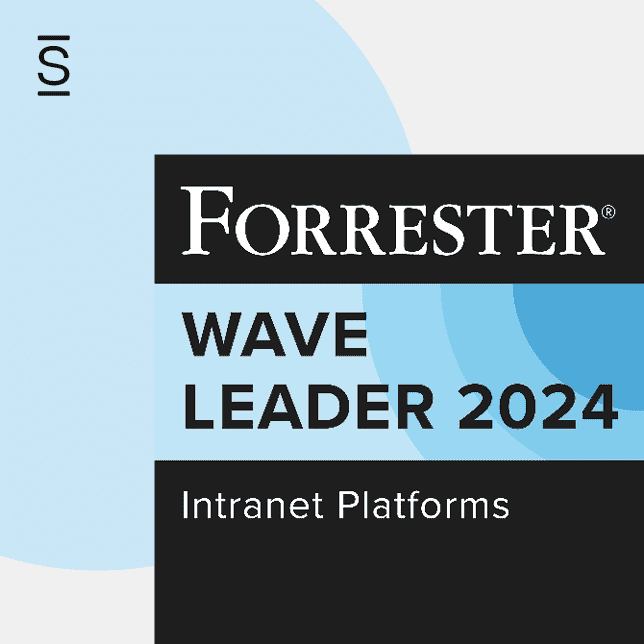If you were to ask your employees what would make them feel more motivated, the odds are that many of them would suggest a pay raise. While you might want to make that happen, it’s not the most practical solution when you’re looking to keep your team excited to come to work every day. Fortunately, there are many creative ways to motivate employees.
Impact of motivation on productivity and engagement
Impact of motivation on productivity and engagement
Studies show that employees care about more than their weekly paycheck. A study published in “Psychology Today” showed that having good camaraderie and peer motivation was at the top of the list. Feeling recognized and encouraged came in third place. Meanwhile, money ranked number seven out of the top 10 motivational tools.
And feeling like their potential is being squandered leads to 79% of employees quitting their jobs. Even If they don’t quit, they’re highly unlikely to be engaged in their work. And that impacts your bottom line. Gallup’s research has consistently shown that companies with engaged employees are more profitable. The numbers don’t lie — it’s worth your time to find ways to motivate employees. Some key stats include:
- Organizations with a high level of engagement report 21% higher profitability.
- Highly engaged teams show a 41% reduction in absenteeism and a 17% increase in productivity.
- sub 1
- sub 2
Most employees won’t reach their potential without proper motivation.
citation
Understanding the psychological drivers of motivation
Before examining specific motivation techniques in detail, it’s helpful to understand the psychological drivers of motivation. Recognizing these factors can help you tailor strategies so they align with your team’s needs and resonate with individual employees:
- Meaningful work: Employees are more motivated when they find their work purposeful and impactful.
- Autonomy and empowerment: Providing a sense of control and ownership over their work boosts motivation.
- Enim libero auctor volutpat lorem et amet elementum aliquam nulla.
- Tincidunt quam ullamcorper sagittis pulvinar vel.
- Eget lorem sed tellus pretium tristique quam.
- Challenging work: Engaging employees with tasks that stretch their abilities encourages growth and satisfaction.
- Clear goals and expectations: Well-defined objectives keep employees focused and driven.
- Recognition and rewards: Acknowledging and rewarding efforts and achievements is crucial for motivation.
- Opportunities for growth and development: Facilitating continuous learning and development fosters long-term engagement.
- Positive work environment: A supportive and inclusive workplace culture enhances overall motivation.
- Effective communication: Clear and open communication strengthens employee engagement.
Learn how to read between the lines and measure employee sentiment
Overview of traditional employee motivation strategies
Traditional employee motivation strategies are foundational to building a strong, productive workforce. Let’s explore key methods in this section that have proven effective in various organizational settings.
The following strategies are designed to address employees’ basic and advanced needs, to help ensure their commitment and growth within your company.

Competitive compensation
Providing competitive compensation offers extrinsic motivation, which is the type of external reward that encourages employees to perform well. Conversely, intrinsic motivation is that internal drive individuals experience when they engage in tasks they find interesting or enjoyable.
Employees who experience both intrinsic and extrinsic motivation at work are more likely to remain committed to your company.
Performance-linked bonuses
While competitive compensation establishes a baseline of motivation, directly tying additional financial rewards to individual performance can further boost motivation. Decide on a reward scheme that is substantial enough to make your employees feel genuinely valued and appreciated for their specific contributions.
Career progression and development opportunities
While there will always be workers who simply want to tread water, most of your employees want to grow with their jobs. Therefore, take this approach from the very beginning by providing adequate training and development opportunities for everyone. Not only will doing so help show your employees they’re valued, but it will also help prepare them to take on higher responsibilities.
Employee benefits
According to Forbes, about 40% of workers switch jobs seeking better benefits. To retain your staff, offer eligible employees essential benefits such as healthcare, mental health assistance and paid time off. And be sure to highlight your benefits package in an engaging employee handbook.
Now, let’s shift our focus to various innovative and creative strategies designed to keep employees excited and engaged in their work.
10 creative employee motivation strategies
These contemporary techniques for employee motivation go above and beyond traditional strategies. They not only add variety and freshness but also boost employee engagement and productivity. Read on to discover how these 10 creative strategies can transform your workplace.
1. Flexible scheduling
Providing your people with a flexible schedule has never been more important. The good news is that offering flexible scheduling can ensure people are working during their most productive hours. In 2014, 46% of study respondents said they were looking for flexibility in the workplace. A 2021 survey discovered that 43% experienced a surge in productivity thanks to flexible scheduling.
2. Remote work options
Allowing your employees to work remotely opens a new world for you and your workers. It enables them to live wherever they’d like, giving your company a much broader talent pool. It also means your workers can reduce their commute time, costs and stress. Meanwhile, you’ll be able to use your workspace more efficiently and save some money!
3. Personalized recognition and rewards system
Traditionally, workplace perks like coffee coupons or store discounts were only used by less than 5% of employees. However, personalized recognition and rewards can gain more employee buy-in.
Case in point: At Agero, personalized employee recognition via Simpplr’s modern intranet significantly increased employee engagement. Senior Communications Specialist Ashley Anglisano said recognition on the platform boosted engagement by 22% within a month of launching the program. Now, even groups traditionally quiet on the intranet jump in to give shout-outs and peer-to-peer awards tied to Agero’s company values. Be sure to read the full case study to learn more.
4. Wellness programs
In today’s health-conscious yet time-constrained culture, offering an on-site gym or membership at a local gym is always a good idea. Other programs that support employee health and wellness, include:
- Smoking cessation program
- Health coaching
- Stress management
- Exercise programs
- Employee assistance program
These kinds of initiatives can motivate employees to be their best selves at work and beyond.
5. Team-building activities
Carefully planned team-building activities nurture deeper connections among employees — a strong motivator. Other benefits include improved communication, increased engagement, strengthened teamwork and trust, enhanced problem-solving and collaboration, and reduced stress and burnout. Here’s a great list of virtual team-building activities to get you started.
6. More opportunities for learning and development
An easy way to help ensure your employees stick around for the long haul is to offer continual learning and development opportunities. Set up a mentoring program. Provide cross-training in departments that employees express interest in learning more about. Offer stretch assignments that speak to the skills they want to develop.
In fact, 94% of workers said they would stay with a company longer if it invested in their learning and development.
And the stronger the leader, the better equipped they’ll be to motivate their team. Offer leadership development opportunities to hone the skills people managers need to keep their employees inspired, aligned and ready to rock their roles.
Professional development realizes higher employee engagement and produces future leaders.
7. Involve employees in decision-making
Rather than leading in a vacuum, invite your employees have a say in the decision-making process. Not only will this help them feel more invested, it’ll increase your company’s odds of making a good decision. Other perks include increasing employee engagement, making your blind spots easier to discover, and getting buy-in from the people who will be implementing the change.
8. Offer interesting perks
Do you want to reduce turnover costs, boost morale, increase employee satisfaction, and create a better work culture? Consider implementing at least a couple of the following employee motivation strategies:
- Pet-friendly workplace
- Free food and drinks
- Surprise days off
- House cleaning services
- Private lactation facilities
- New baby bonus

9. Leverage a digital workplace
A dynamic digital workplace can work wonders at enhancing employee engagement and productivity (and maybe even attract some new hires). You can reach employees where they are to:
- automate mundane work so employees have time for more creative and fulfilling tasks.
- give more transparency into goal-setting and tracking progress.
- provide opportunities for connection via real-time communication, interest groups and more.
10. Employee-led innovation and co-creation initiatives
Brands like Disney use this clever strategy to bolster employee engagement and involvement to create new ideas, products and services. Here are some ideas:
- In-house idea hubs: Develop platforms for employees to suggest, develop and collaborate on innovative ideas — creating a hub for creativity.
- Organizational hackathons: Organize events for teams to solve specific challenges or explore new technologies, sparking innovation.
- Cross-departmental collaboration workshops: Conduct workshops for diverse teams to create solutions for company-wide issues, enhancing teamwork and broad thinking.
- Employee-directed research projects: Allow employees to lead R&D projects, supporting their promising ideas with necessary resources.
- Innovation acknowledgment: Recognize and reward both successful and potential innovative ideas, promoting ongoing creativity.
Making employees feel part of something bigger by giving them more opportunities to innovate and create — sometimes outside their normal job responsibilities — can turbocharge productivity.


















